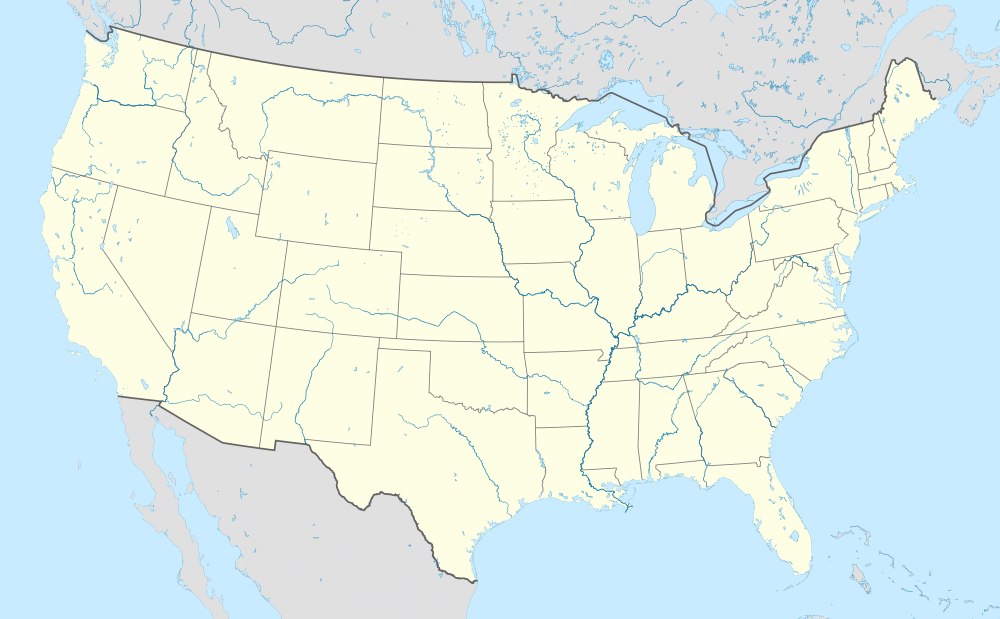High-A

High-A (officially Class High-A, formerly known as Class A-Advanced, and sometimes abbreviated "A+" in writing) is the third-highest level of play in Minor League Baseball in the United States and Canada, below Triple-A and Double-A, and above Low-A. There are currently 30 teams classified at the High-A level, one for each team in Major League Baseball, organized into three leagues: High-A East, High-A Central, and High-A West.[1] As part of the 2021 reorganization of the minor leagues, the three current High-A leagues replaced the Carolina League, Midwest League, and Northwest League, respectively, with the Midwest League having previously been a Low-A League and the Northwest League having previously been a short-season league.[2]
History[]
Class A-Advanced was established as a classification level within Minor League Baseball in 1990 by subdividing the existing Class A.[3] Class A had been the third-highest level in the minor leagues since 1936 (when it was below Double-A and Class A1) and a hierarchy of Triple-A and Double-A above Class A had been in place since 1946.[4]: 15 In 1963, the three classes below Class A (Classes B, C, and D) were abolished, with leagues at those levels moved into Class A.[4]: 15 In 1965, Class A was subdivided for the first time, with the establishment of lower-level Class A Short Season leagues.
The 1965 hierarchy was in place for 25 years, until Class A was further subdivided in 1990, with Class A-Advanced becoming the third-highest classification:
- Triple-A
- Double-A
- Class A-Advanced
- Class A ("Full-Season A")
- Class A Short Season ("Short-Season A")
- Rookie league
Three leagues (each previously Class A) received the Class A-Advanced designation: California League, Carolina League, and Florida State League.[3] This arrangement would continue until 2021 when Major League Baseball restructured the minor leagues, eliminating Class A Short Season, and discontinuing all leagues operating within Minor League Baseball. The existing Class A leagues were replaced with three "Low-A" leagues, while the existing Class A-Advanced leagues were replaced with three "High-A" leagues.[5]
Prior to 2021, the classification was officially named "Class A-Advanced" per The Official Professional Baseball Rules Book;[6] starting in 2021, the official name is "Class High-A".[7]
Current teams[]
High-A East[]
High-A Central[]
High-A West[]
| Team | Founded | MLB Affiliation | City | Stadium | Seating Capacity |
|---|---|---|---|---|---|
| Eugene Emeralds | 1955 | San Francisco Giants | Eugene, Oregon | PK Park | 4,000 |
| Everett AquaSox | 1995 | Seattle Mariners | Everett, Washington | Funko Field | 3,682 |
| Hillsboro Hops | 2013 | Arizona Diamondbacks | Hillsboro, Oregon | Ron Tonkin Field | 4,500 |
| Spokane Indians | 1983 | Colorado Rockies | Spokane, Washington | Avista Stadium | 6,803 |
| Tri-City Dust Devils | 2001 | Los Angeles Angels | Pasco, Washington | Gesa Stadium | 3,654 |
| Vancouver Canadians | 2000 | Toronto Blue Jays | Vancouver, British Columbia | Scotiabank Field at Nat Bailey Stadium | 6,500 |
Playoffs[]
This section needs expansion with: playoff structure prior to the 2021 re-org. You can help by . (June 2021) |
On June 30, 2021, Minor League Baseball announced that the top two teams in each league (based on full-season winning percentage, and regardless of division) would meet in a best-of-five postseason series to determine league champions.[8]
References[]
- ^ "Teams by League and Classification". Minor League Baseball. Retrieved November 8, 2020.
- ^ Mayo, Jonathan (February 12, 2021). "MLB announces new Minors teams, leagues". MiLB.com. Minor League Baseball. Retrieved February 14, 2021.
- ^ a b Cronin, John (2013). "Truth in the Minor League Class Structure: The Case for the Reclassification of the Minors". SABR. Retrieved April 16, 2021.
- ^ a b The Encyclopedia of Minor League Baseball. Lloyd Johnson & Miles Wolff, editors (Third ed.). Baseball America. 2007. ISBN 1932391177.
{{cite book}}: CS1 maint: others (link) - ^ Creamer, Chris (February 15, 2021). "A Breakdown of Minor League Baseball's Total Realignment for 2021". sportslogos.net. Retrieved April 16, 2021.
- ^ The Official Professional Baseball Rules Book (PDF). New York City: Office of the Commissioner of Baseball. 2019. pp. 158–159. Archived from the original (PDF) on July 31, 2019 – via Wayback Machine.
- ^ The Official Professional Baseball Rules Book (PDF). New York City: Office of the Commissioner of Baseball. 2021. p. 10. Retrieved May 1, 2021 – via mlbpa.org.
- ^ Heneghan, Kelsie (June 30, 2021). "Playoffs return to the Minor Leagues". MiLB.com. Retrieved July 1, 2021.
External links[]
- Minor league baseball
- High-A East
- High-A Central
- High-A West
